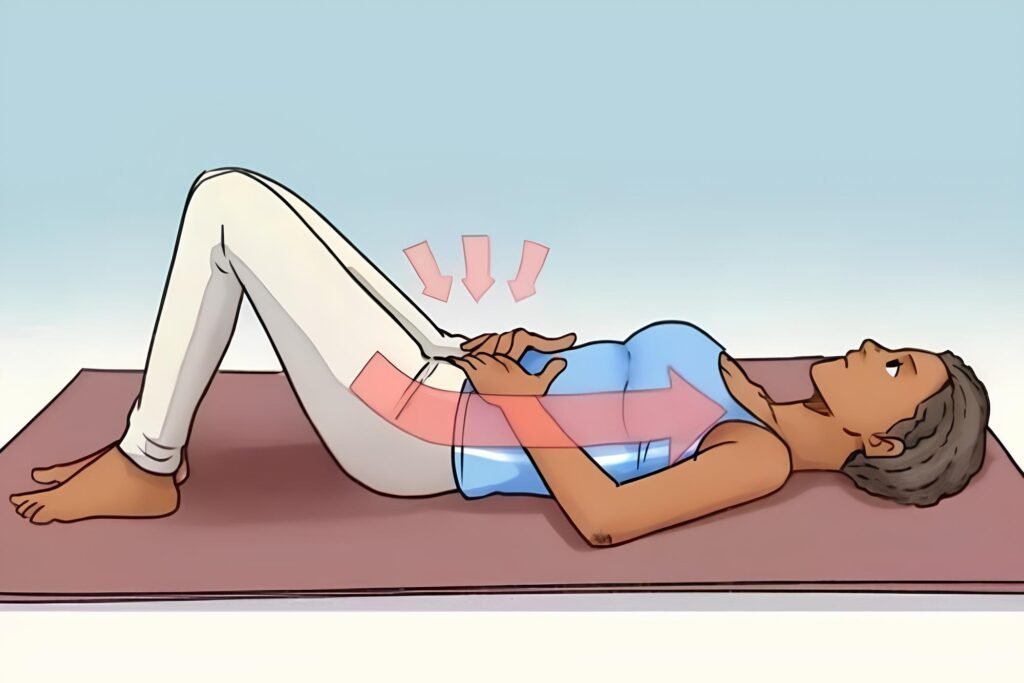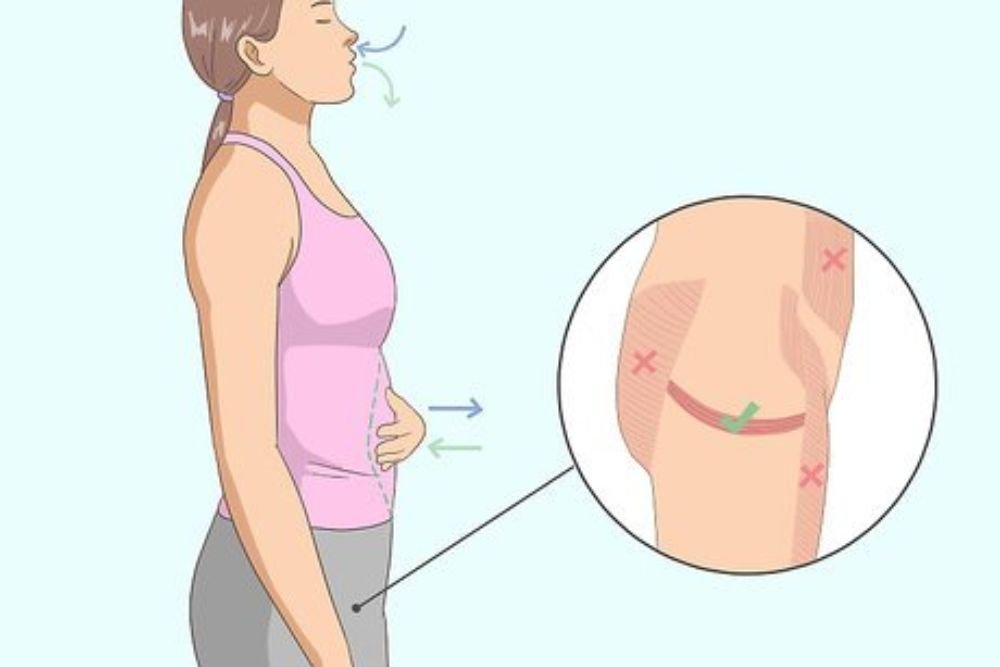Introduction to Kegels for Women
Have you ever considered how much your pelvic floor muscles do for you? These unsung heroes play a pivotal role in bladder control, sexual health, and core stability. When these muscles weaken, life can throw some frustrating curveballs, like leaks during a sneeze or reduced sexual satisfaction. Luckily, there’s a simple and effective solution: Kegels for women.
Kegel exercises, named after Dr. Arnold Kegel, are a tried-and-true method to strengthen the pelvic floor. These discreet, zero-equipment moves are accessible to everyone, no matter your fitness level. While the focus of this article is on kegels for women, men can also benefit from these exercises. But here, we’ll dive into how women can master five powerful moves to supercharge their pelvic health.
Whether you’re a Kegel newbie or looking to refine your technique, this guide will equip you with all the tools you need to reap the benefits.
The Importance of Kegels for Women
Why Focus on Pelvic Strength?
Your pelvic floor is like a hammock that supports your bladder, uterus, and rectum. Over time, this “hammock” can lose its elasticity due to factors like pregnancy, childbirth, menopause, or even prolonged sitting. The result? Issues like incontinence, pelvic organ prolapse, and decreased intimacy.
Kegels for women are the ultimate workout for this critical area. Regular practice can lead to:
- Improved bladder and bowel control
- Enhanced sexual satisfaction
- Faster postpartum recovery
- Reduced risk of pelvic organ prolapse
- Greater core stability
How Pelvic Strength Affects Everyday Life
Imagine trying to build a house on a shaky foundation—it’s not going to last. That’s what happens when your pelvic floor isn’t strong. Strengthening these muscles ensures you feel supported, confident, and in control in every aspect of your life.
Finding the Right Muscles for Kegels for Women

Identifying Your Pelvic Floor
Before diving into the five moves, it’s essential to locate the right muscles. Here’s how:
- The Urine Test: Try stopping the flow of urine midstream. The muscles you engage are your pelvic floor. This is just for identification purposes and not a regular exercise method.
- Use Your Hands: Place a hand on your lower abdomen and another on your glutes. Contract the pelvic muscles. You shouldn’t feel movement in your abs or butt—only the pelvic area should tighten.
- The Vaginal Squeeze: Insert a clean finger into your vagina and try to squeeze it gently. If you feel a lift, you’ve got the right spot.
With your muscles identified, let’s move to the exercises that promise rapid gains.
The 5 Moves for Rapid Pelvic Strength Gains
Now that you’ve pinpointed your pelvic floor muscles, it’s time to learn the five key moves that will take your strength to the next level. These exercises are progressive, meaning you’ll start with basics and gradually increase intensity.
Move 1: The Basic Kegel
The basic Kegel is the foundation of all pelvic floor exercises. It’s simple yet highly effective.
How to Perform:
- Sit or lie down in a comfortable position.
- Contract your pelvic floor muscles for 3-5 seconds.
- Relax for an equal amount of time.
- Repeat 10 times, working up to 3 sets daily.
Pro Tip: Focus on controlled breathing. Avoid engaging your glutes, thighs, or abdomen during the exercise.
Move 2: The Elevator Lift
This move takes the basic Kegel up a notch by incorporating different levels of contraction.
How to Perform:
- Visualize your pelvic floor muscles as an elevator.
- Gently tighten the muscles as if lifting the elevator to the first floor, then hold.
- Tighten a little more to reach the second floor, hold again.
- Gradually release floor by floor until fully relaxed.
- Perform 5-10 repetitions.
Why It Works: This exercise builds control and endurance, helping you engage your pelvic muscles with precision.
Move 3: Quick Flicks
Quick flicks target the fast-twitch muscle fibers of your pelvic floor, improving their response time.
How to Perform:
- Sit or stand comfortably.
- Rapidly contract and release your pelvic floor muscles.
- Aim for 15-20 quick flicks per session.
- Repeat 2-3 sessions daily.
When to Use: Quick flicks are especially useful for managing sudden urges to urinate or sneezing-related leaks.
Common Mistakes to Avoid
Even with the best intentions, mistakes can happen. Let’s ensure you’re maximizing the effectiveness of your practice by avoiding these common errors.
Using the Wrong Muscles
Engaging your glutes, thighs, or abdomen is a common mistake that reduces the focus on the pelvic floor. Always double-check your form.
Overtraining
It might be tempting to overdo it, especially when you’re eager to see results. However, just like any workout, rest is essential to allow muscles to recover and strengthen.
Forgetting to Breathe
Holding your breath during contractions can add unnecessary tension. Practice steady, rhythmic breathing to keep your body relaxed.
Also read: Kegel Exercises for Women | 7 Steps to a Stronger Pelvic Floor
Building Consistency With Kegels for Women

Consistency is the secret to unlocking the full potential of kegels for women. Here’s how to make them a seamless part of your routine:
- Set Reminders: Use alarms or apps to prompt your sessions.
- Integrate Into Daily Life: Practice Kegels while brushing your teeth, commuting, or watching TV.
- Track Your Progress: Keep a journal to note improvements, like fewer leaks or increased muscle awareness.
Move 4: The Bridge Kegel
The bridge Kegel combines a classic glute bridge with pelvic floor engagement, offering a dual-strengthening benefit.
How to Perform:
- Lie on your back with knees bent and feet flat on the floor.
- Engage your pelvic floor muscles as you lift your hips into a bridge position.
- Hold the contraction for 5 seconds at the top, then slowly lower your hips.
- Perform 10 repetitions, aiming for 2-3 sets.
Why It Works: By combining pelvic floor engagement with core and glute activation, this move enhances overall stability and strength.
Move 5: The Standing Kegel
The standing Kegel is perfect for taking your exercises to a functional level, simulating real-life scenarios where pelvic strength is needed.
How to Perform:
- Stand with feet shoulder-width apart and knees slightly bent.
- Engage your pelvic floor muscles as if lifting them upward.
- Hold for 5 seconds, then relax for 5 seconds.
- Complete 10 repetitions, working up to 3 sets.
When to Use: This move is great for practicing pelvic control during activities like lifting or bending.
How to Measure Progress With Kegels for Women
Tracking your progress helps you stay motivated and ensures you’re on the right path. Here’s how to gauge improvement:
Physical Changes
- Incontinence Control: Are leaks happening less frequently or with less intensity?
- Sexual Satisfaction: Do you feel more sensation during intimacy?
- Core Stability: Are you noticing improvements in posture or reduced back pain?
Endurance and Strength
- Can you hold a contraction longer than when you started?
- Are you able to perform more repetitions without fatigue?
Integrating Kegels Into Your Workout Routine
While kegels for women are effective on their own, combining them with other exercises amplifies their benefits. Here are some complementary workouts:
Yoga Poses
Poses like Child’s Pose, Happy Baby, and Bridge pose naturally engage the pelvic floor while promoting relaxation and flexibility.
Pilates Exercises
Pilates focuses on core engagement, which complements Kegel exercises perfectly. Moves like the Hundred or Leg Circles activate the pelvic floor.
Addressing Concerns About Kegel Exercises
“What If I’m Not Seeing Results?”
Consistency and patience are key. If you’re not noticing changes after 6-8 weeks, consult a pelvic health specialist for personalized guidance.
“Can Kegels Cause Pain?”
When done correctly, Kegels shouldn’t cause discomfort. If you feel pain, you might be overworking the muscles or using improper technique. Rest and reassess your form.
Advanced Strategies for Kegels for Women
As your pelvic floor muscles become stronger, you can enhance your routine with advanced strategies to maintain progress and challenge yourself.
Add Resistance
Using tools like Kegel weights or vaginal cones adds resistance, making your exercises more effective.
How to Use:
- Insert the weight or cone as instructed by the product guidelines.
- Perform your Kegels while keeping the weight in place.
- Gradually increase the weight as your strength improves.
Combine Kegels With Functional Movements
Incorporating pelvic floor contractions into everyday movements, like squats or lunges, further integrates these muscles into your daily activities.
The Role of Lifestyle in Pelvic Health
While kegels for women are powerful, a holistic approach maximizes results. Here’s how lifestyle factors play a role:
Hydration and Diet
Drinking plenty of water and eating fiber-rich foods supports bladder and bowel health, reducing strain on your pelvic floor.
Posture Awareness
Good posture minimizes unnecessary pressure on your pelvic floor. Incorporate ergonomic adjustments at work and home to support proper alignment.
Overcoming Plateaus in Pelvic Strength
Even with consistent practice, plateaus can happen. Here’s how to push through:
Revise Your Routine
Switch up your exercises or increase the intensity with longer holds and more repetitions.
Seek Professional Support
A pelvic health specialist can provide targeted exercises and correct any form issues that might be holding you back.
Final Thoughts on Kegels for Women
Kegels for women are more than just exercises—they’re a gateway to better health, confidence, and quality of life. By mastering these five moves and staying consistent, you’ll unlock the full potential of your pelvic floor.
Recap of Key Points:
- Locate and properly engage your pelvic floor muscles.
- Start with the basic moves, gradually increasing intensity.
- Incorporate advanced techniques like resistance and functional movements.
- Support your efforts with a healthy lifestyle and proper posture.
- Track progress and celebrate milestones to stay motivated.
Conclusion: Take Charge of Your Pelvic Health Today
Your pelvic floor is the foundation of your body’s strength and stability. With kegels for women, you have a simple yet powerful tool to enhance every aspect of your well-being.
Have you tried any of the exercises mentioned here? What has your experience been like with kegels for women? Share your thoughts in the comments below, and let’s build a community where we can support and inspire each other on this journey to better health!